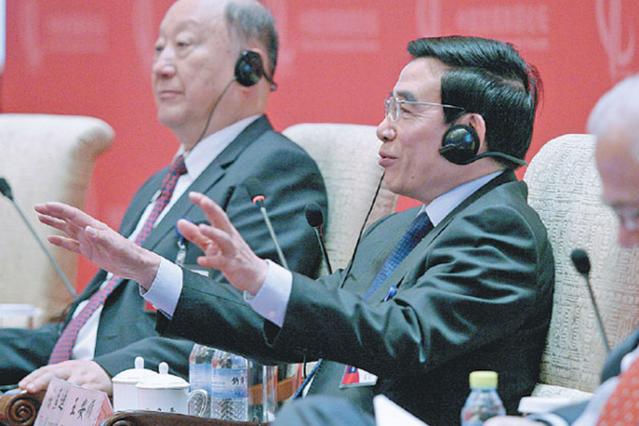

 |
Beijing Mayor Wang Anshun vows the capital will work with Tianjin and Hebei province to boost regional development and make the region a leading force for the country's economy. [Photo by Wang Zhuangfei / China Daily] |
Far-reaching document charts the way forward for Beijing, Tianjin and Hebei
Goals have been set for the integrated development of Beijing, Tianjin and Hebei in the next 15 years.
The aim is to transfer the nonessential functions of Beijing and form an optimized structure for the capital's core functions by 2030, according to an official document.
It is the first time the central authorities have released the three governments' strategic positions in the integrated growth of the trilateral region, giving them clear roles for better coordination.
Beijing will become the national center for politics, culture, international exchanges and scientific and technical innovation.
Tianjin will be a national research and development base for advanced manufacturing, a hub for international shipping in North China, a zone for financial innovation and services, and a pilot zone for economic reform.
Hebei province will be an important national base for trade and logistics, a pilot zone for industrial transformation and upgrading, a demonstration area for modern urbanization and urban-rural integration, and an ecological buffer zone, the document said.
It reveals key information for the Beijing-Tianjin-Hebei integrated development program, which was approved by the national leadership in April.
The document was issued by the office of the leading group for Beijing-Tianjin-Hebei integrated development, Xinhua News Agency reported.
Beijing and its two neighbors have faced severe challenges from social and environmental issues.
For example, Beijing has performed too many functions beyond its role as a capital, bringing it serious urban problems including a high population, traffic congestion, air pollution and soaring property prices.
Within the region, the three areas have faced groundwater depletion, environmental pollution and a sharp contradiction between economic growth and natural resources.
The regional challenges mean that coordinated development is urgent and necessary to solve these problems. The priority for the integration will be the transfer of noncapital functions from Beijing to Tianjin and Hebei.
By 2017, breakthroughs in transportation integration, environmental protection and industrial upgrading in the trilateral region will be achieved, with Beijing seeing "remarkable progress" in easing its noncapital functions, the document states.
The medium-term target for the regional integration strategy is to contain Beijing's population within 23 million and to improve the environment by 2020.
Industrial coordination will achieve regional breakthroughs with an efficient integrated growth system. Social development gaps between different areas will be reduced by a better delivery of public services.
By 2030, the strategy aims to form an integrated Beijing-Tianjin-Hebei region, with an improved economic structure, cleaner environment and better public services. The integrated region will become an area with strong competitiveness and influence globally, according to the document.
"The targets can be met if the three areas can fully implement the efforts," said Yang Hongshan, a professor of local government development at Renmin University of China.
The document requires the three areas to discuss detailed plans to reach the goals, which may take some time after the outline is released, Yang added.
The leading group also stressed the importance of implementation, saying it will break down barriers in the three administrative areas that block the free flow of capital, technology, property rights and labor.
They will promote a coordination system for policymaking relating to administration, infrastructure construction, environmental protection, industrial development and technological innovation.
Highlights
A look at the guideline for the coordinated development of the Beijing-Tianjin-Hebei region:
Reducing Beijing's burdens: The guideline says the primary target is to release Beijing from its noncapital functions, and solve the city's major problems in urban development. It will also increase the coordination between Beijing and Tianjin, enhancing industrial cooperation and urban integration. The main framework of the coordination lies in three city clusters: Beijing and Tianjin; Beijing, Baoding and Shijiazhuang; and Beijing, Tangshan and Qinhuangdao.
Targets
2017: There will be progress in reducing the noncapital functions in Beijing, and breakthroughs in the coordination of transportation, environmental protection and industrial upgrading.
2020: The population of Beijing will be contained within 23 million, and the problems that arose with its urban development could be effectively solved. A coordinated transportation network will take shape, and the regional environment will be improved significantly, with progress being made in the coordinated development of industries. Gaps in public services such as education and medical care will be effectively closed. The investments in science and innovation will be further strengthened.
2030: A coordinated pattern of regional development will take shape.
© China Daily Information Co